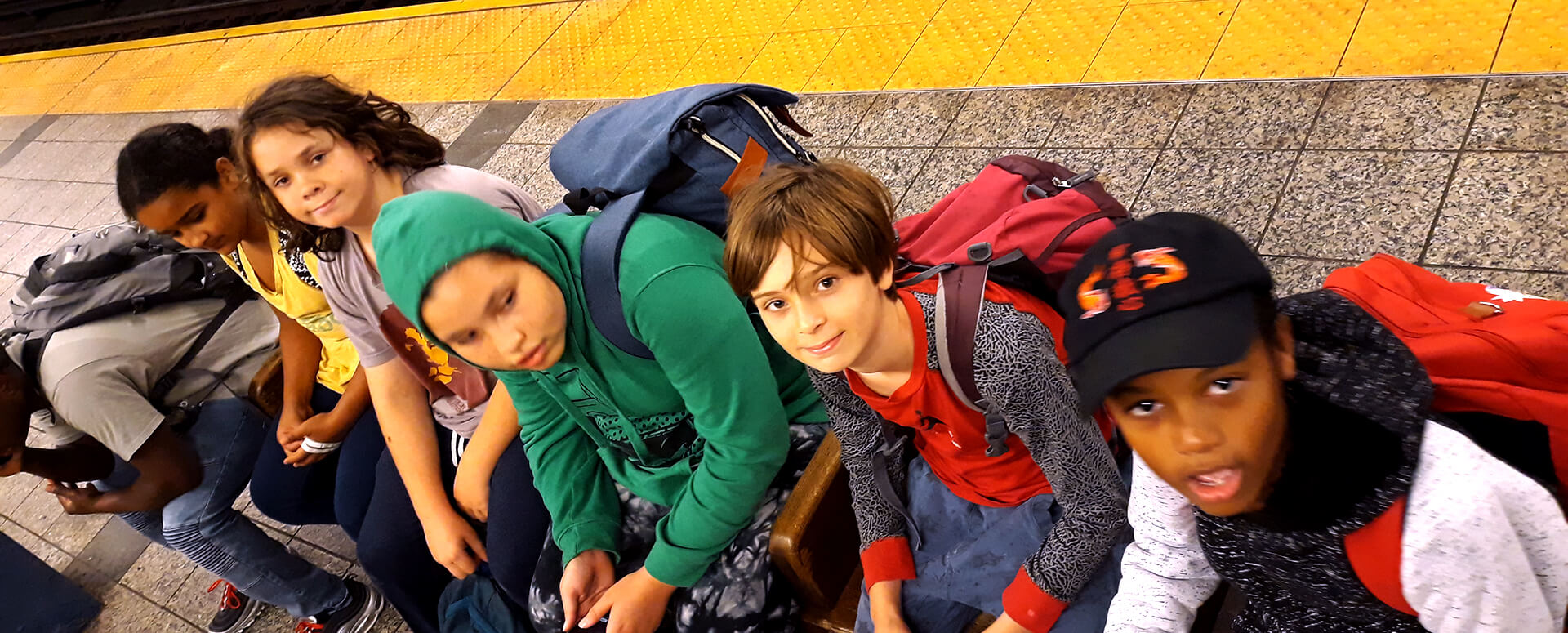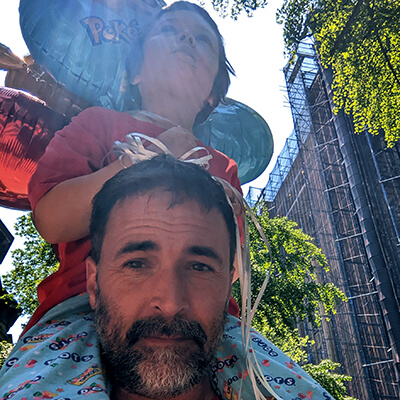I was the type of kid who would who make “survival” packs and travel kits in old tin boxes. They would usually contain things like a map, a lock and key, a golf pencil, some nickels, rubber bouncy balls, toothpicks, and safety pins. Clearly I would have survived any apocalypse. But in all seriousness, I was constantly thinking about how to pack things, what was necessary for having a good time wherever I went, and how to make it orderly and fit in my kid-sized pockets. Little did I know at the time that this would develop into a professional skill.
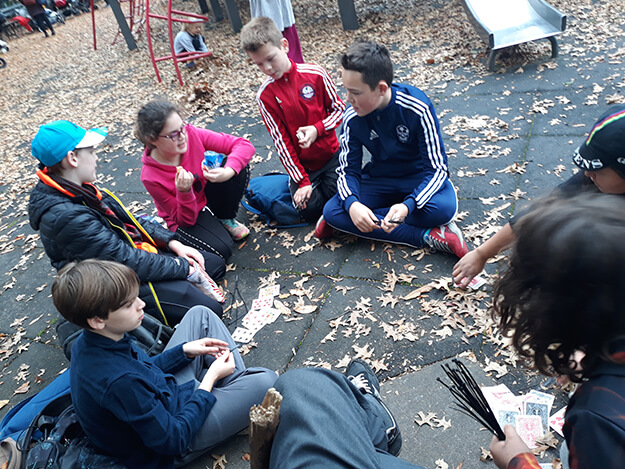
A couple of years ago I started the first Flying Squad, outdoor, all weather daily excursions for young people. Unlike field trips, the idea behind Flying Squads is to let the group self-direct where we are going and what we are doing. It is the ultimate self-directed environment, one where there is no dictation of boundaries beyond our own physical and financial means and no predetermined tools... except for the things I would pack in my backpack.
As the pandemic has become a concern for many indoor environments, I have been getting more and more people asking me about Flying Squads as an option for the fall. And I have especially gotten a lot of questions about what gear I pack for the occasion.
It feels a little bit like taking photos of my sock drawer, but for those interested, below is a list and explanation of what and how I pack for Flying Squad days. It is important to note that this is how I packed my bag pre-pandemic days. Some of these materials might not be appropriate for a pandemic, and I will be questioning each of these as we proceed into the next school year. Also, I mostly work with a group of pre-teens in an urban environment, where a giant park is our green space. Obviously different age groups in different settings will want to adjust what they pack.
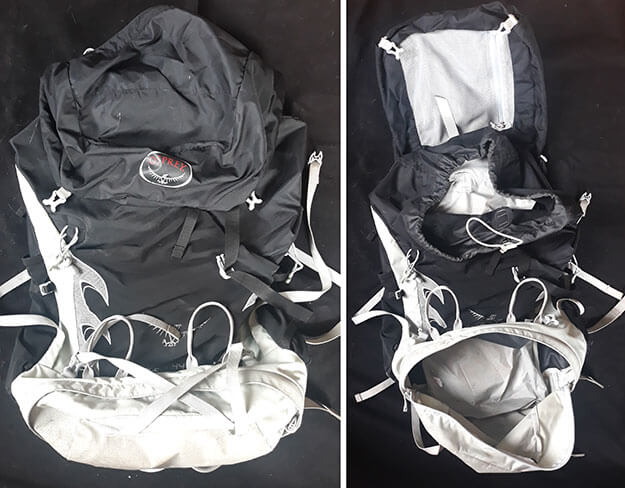
Originally, I tried an old army backpack that nearly broke my back. Ultimately, I invested in a hiking backpack that has one main storage area with a pull string on top and a zipper on bottom for quick, easy access to most of the contents. It also has multiple straps and exterior pockets for things like water bottles, rain gear, and places to stuff things that have been pulled out and need to quickly be stuffed as we spontaneously move about.
I have considered rolling luggage and hand trucks to spare my poor back, but in the end, neither will do. We move quickly through the woods and up and down uneven surfaces. And so, my gear needs to be quick to pack and easy to maneuver with. One of the young people I work with has a pedometer and told me that we average 6-8 miles of walking a day (which means I am doing more like 8-10, since I walk to and from our meeting point and home). This means every ounce counts, and so, a lot of thought needs to be put into what is worth carrying.
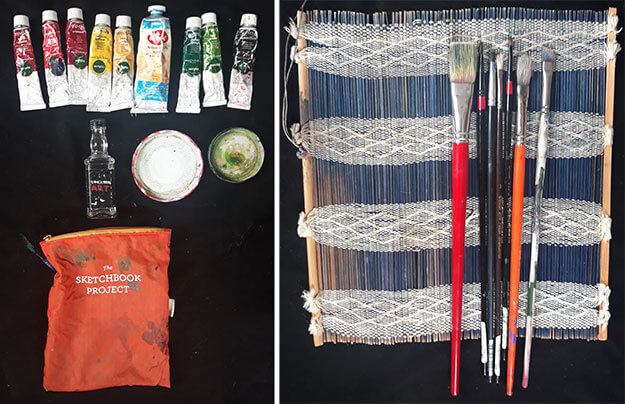
All of the materials I carry are packed systematically together in small pouches that can be retrieved easily, are easily identified from one another, and have extra room in them to be easily put back. All young people have open access to anything in the bag and grab what they want as they please.
Unsurprisingly, art supplies are the most used material. I generally keep primary color acrylics (easy to clean up, paints on any surface, relatively cheap), bottle lids for tiny palettes or for dipping one’s brush into water, and an old nipper bottle filled with water. Not seen in the photo, I neatly fold up a few pieces of paper towel and hand them out individually and sparingly for cleaning brushes at the end (okay, maybe I’m a bit controlling of the paper towels...) A family friend from Japan gave me a sushi roller mat that works perfectly for holding some paintbrushes.
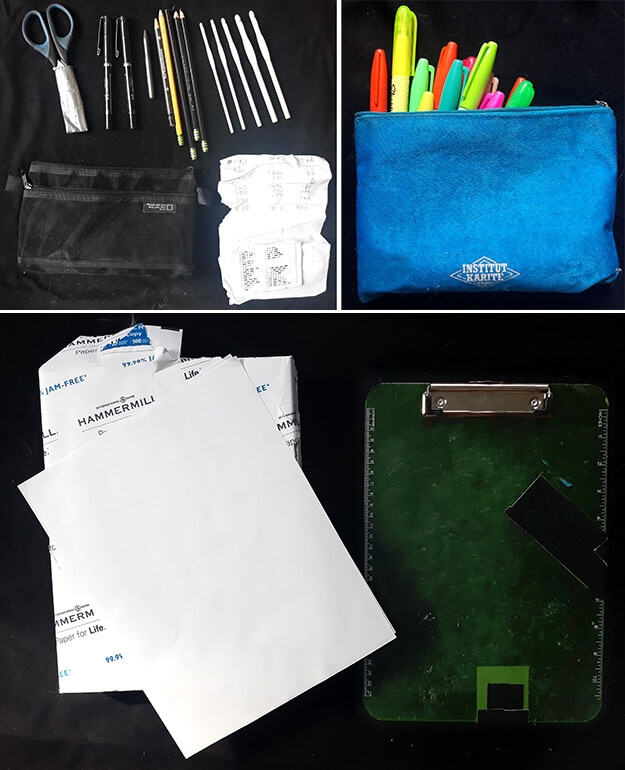
I keep a separate bag of just Sharpie markers and another one that has pens, pencils, graphite pencils, scissors (with a duct tape cover to help me from being stabbed), and crochet hooks (and apparently an old Morse code chart (communicating in Morse code was a hot thing for a moment) and an old Canasta score sheet (Canasta is a wonderful game to play with Flying Squads!)
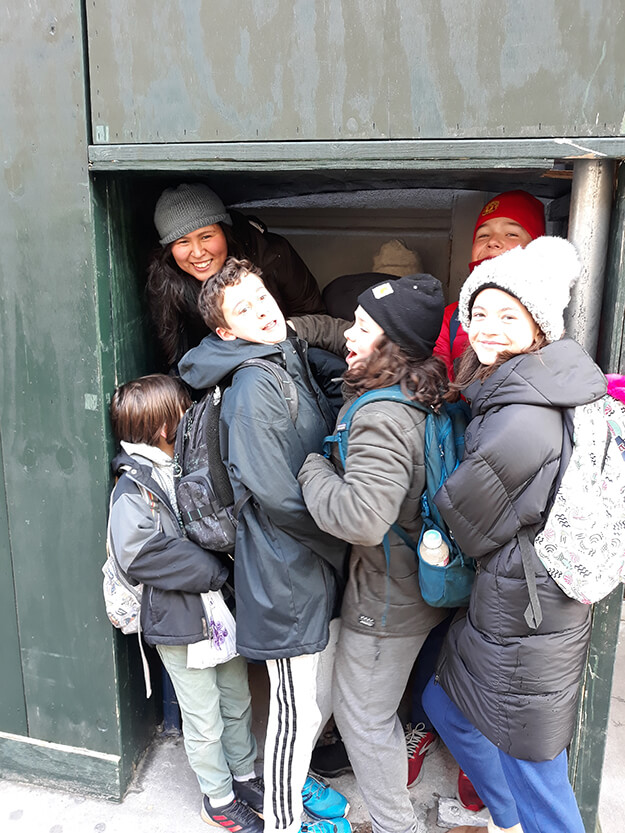
I keep a ream of paper at home and refill it pretty much on a daily basis. I keep it on a clipboard in my bag to help it from getting crushed. Typically I keep 3-4 pieces of cardboard (not shown) that are just bigger than a piece of paper, each with 1-2 rubber bands around them. These act as cheap on-the-go clipboards.
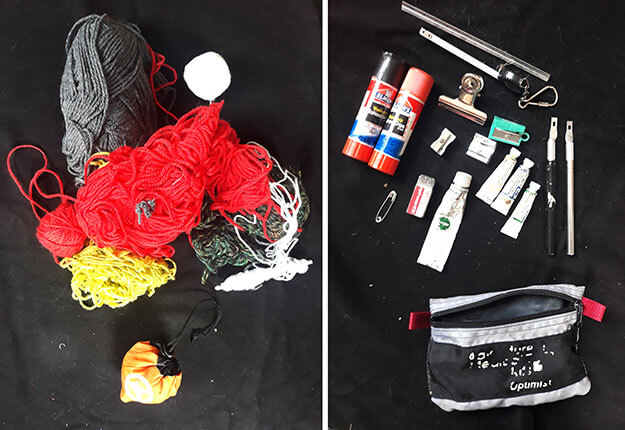
In a reusable bag that collapses into a little, orange pocket pouch, I keep loads of yarn for crocheting, crafts, on the fly wigs, and fort decorations. I try to make small balls of them so they tangle less easily and can be shared more widely, but this is an ongoing battle between me and the yarn.
In an old first aid kit bag that zips tightly I keep small rulers, measuring tapes, pencil sharpeners of various sizes, erasers, random tubes of watercolor paint, exacto knives (with the points screwed on backwards), clips to hold paper onto the cardboard in the wind, glue sticks, safety pins, and generally loads of pencil shavings.
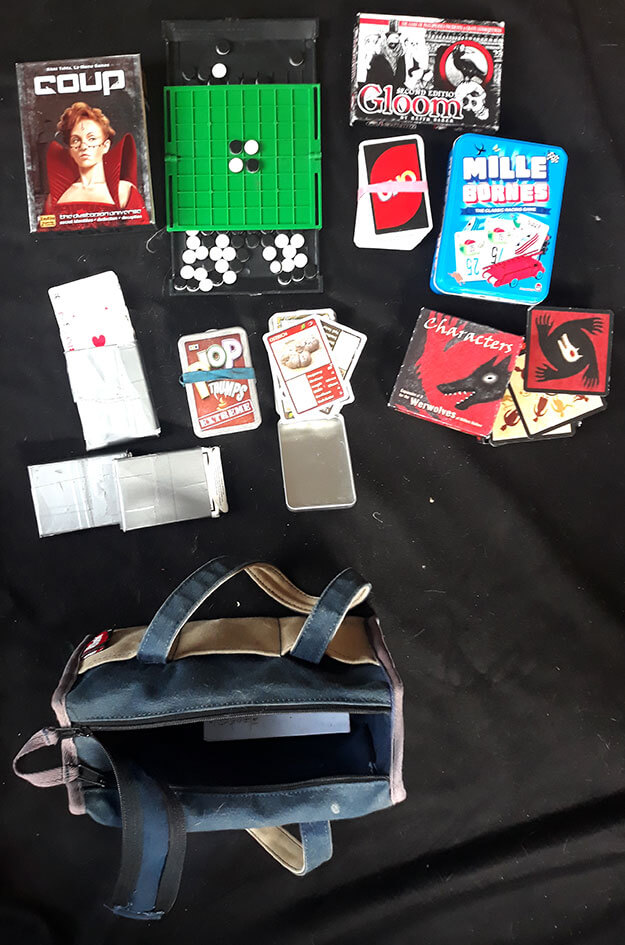
My favorite bag is one that has a double zipper top so it opens widely on top. I got it at a Utrecht Art Supply Store some twenty or so years ago. Unfortunately, the art supply store chain was bought out, and I cannot find more of those bags, otherwise I would likely have more of them. In it I keep pocket sized games. Aside from Othello, I try to keep games that don’t have many loose parts that can be lost easily. I also keep some really accessible– most especially Uno. I keep a wad of Uno cards in a rubber band and usually stick them in my pocket when we’re riding a bus or subway (something we will not be doing when we go back this fall). Then when people are bored, I play one handed Uno with them while hugging a subway pole (hugging a subway pole actually sounds really scary to me now!)
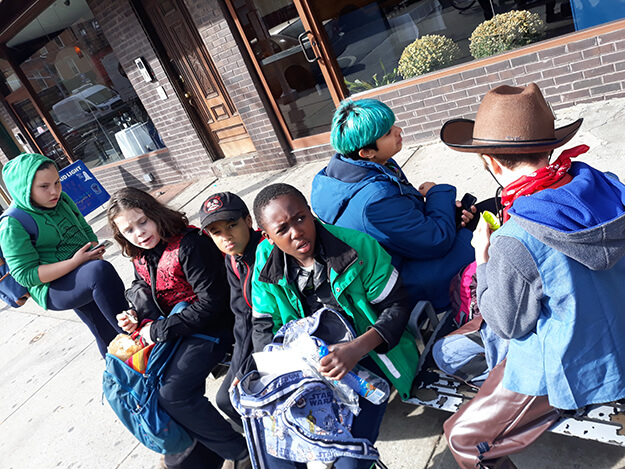
I wrap a lot of the flimsy boxes in duct tape so they will hold together better and be somewhat water resistant. Werewolves is so wonderful because it is light to carry, can be enjoyed for hours, and can be all inclusive of the group. Plop Trumps (a trading card game of different animal poop) is a great one for bringing newcomers in for some reason. Every person who joins mid-year always seems entertained by it and it acts as a wonderful icebreaker (surely listed as such on all DOE curricula). Pre-pandemic days, we would sometimes splurge and hit up a game cafe with more board games (especially when we need to thaw out in the winter!)
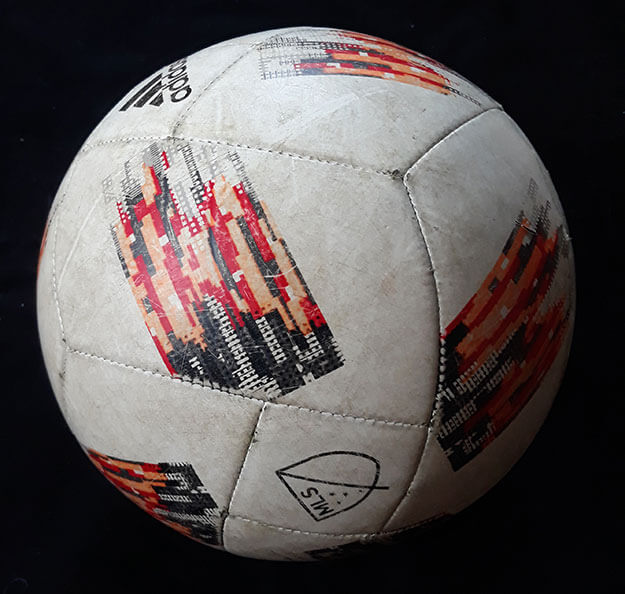
A soccer ball has proven to also double as a basketball (but not vice versa), and so, it is my ball of choice. Extra clothes and backpacks make great goals. When walking in the park, normally I just pull the soccer ball out and someone wants to kick it and run down the hill after it ahead of the rest of us. A tennis ball or palm sized ball is a good idea too. If you can find a less bouncy one, I find that to be helpful both in not losing it as easily and also for more crowded areas (to help the urge of running after the bouncy ball in the street...) I generally keep the soccer ball at the top of my bag or in a separate reusable bag hanging from a strap so young hands can just grab it and go right as I am walking.
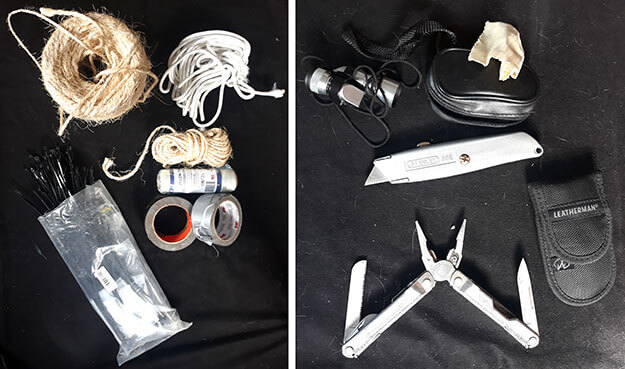
I have a love-hate relationship with zip ties. They are cheap, light, and can be used even by a five year old for binding tree branches and the like together. However, they are a one-use plastic piece of litter. For that reason, I have been moving away from them, but sometimes I do pull them out (especially when working with younger house / fort building enthusiasts). The same can essentially be said of duct tape, although duct tape generally is hard to rip for little hands. I have been trying to move towards twine, cheap rope, clothes lines, and such. Since rope is biodegradable, it leaves me with a cleaner conscience when we leave our deep forest “villages” standing at the end of the day.
An exacto knife or two is really helpful (in all my years of working with young people, I have yet to administer more than a band aid). A Leatherman with pliers and a saw is a lot of fun. And of course, every Flying Squad needs a monocular.
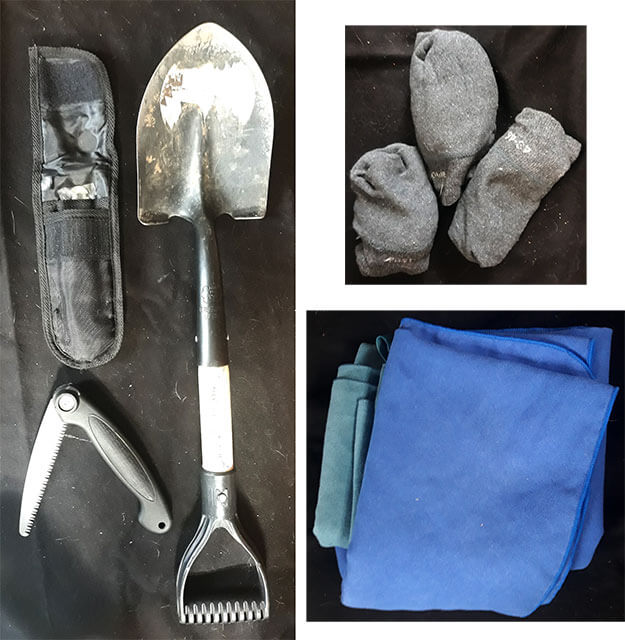
A small shovel is also wonderful fun and gets out a lot of young energy in digging pot holes all over the land. It is also, obviously, essential for buried treasure (that never is found again). I am saving up to get a nice foldable one for my next squad bag upgrade. A folding saw is great for older kids who want that main branch that broke but isn’t completely separated from the dead tree. Socks, lots of extra socks kept in a waterproof bag! And microfiber towels can sometimes be nice to dry off with or sit on.
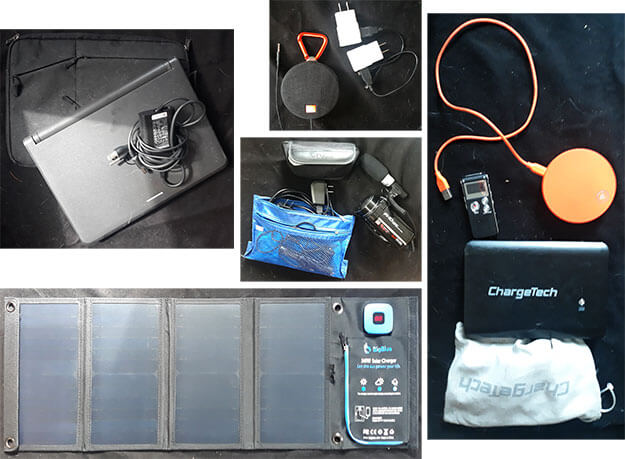
In general, we typically steer clear of electronics on Flying Squads, but I think this year is going to be different. Since our plan is to be outside a LOT, I might change up some of the village building, card playing activities with some movie making. I bought a couple of really cheap video cameras that we have been using to make our own YouTube channel. I also bought a few $75 used laptops in totally good condition (the DOE donated them to a senior center that kindly sold me some they didn’t want). An extra battery pack and/or solar charger thrown in there is great for the day you are working on the next Academy Award winning film and realize you forgot to charge the camera batteries last night.
A small speaker for music is great. A wifi hotspot is totally unnecessary but... I have it and have used it. And a small voice recorder has been used for on the fly interviews for making our school newspaper.
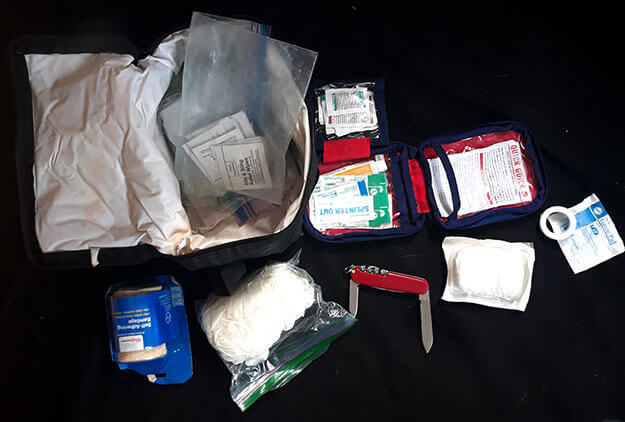
I prefer to make my own first aid kits (which at the moment I store in an ice pack freezer bag). Store bought first aid kits come with all sorts of medication and things I legally am not allowed to administer. And generally I need eight times the band aids they provide. With professional first aid and CPR training and a small first aid kit, I am prepared for any basic emergency, with the understanding that there is never an EMT more than ten minutes from where we are.
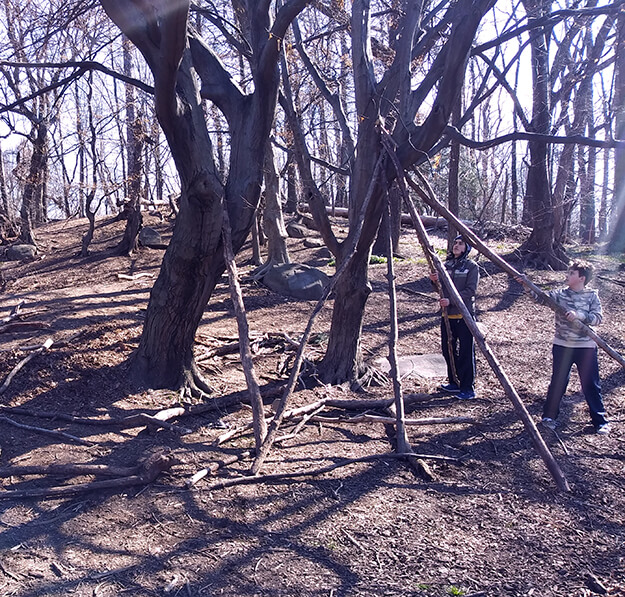
And I should note, since I work with older children, two of my own children accompany me, and I am working mostly with a group of young people I have known for years and trust completely, I am never all that concerned about being the only adult with them. If there were a true emergency, they would know what to do and other adults and medics are always nearby (we’re also generally a short walk away from various homes of the group). But of course, it is important to think these things through with whatever group you’re heading outside with. If you’re breaking into “pods” perhaps make sure another group is not far away and you have one another’s contact information.
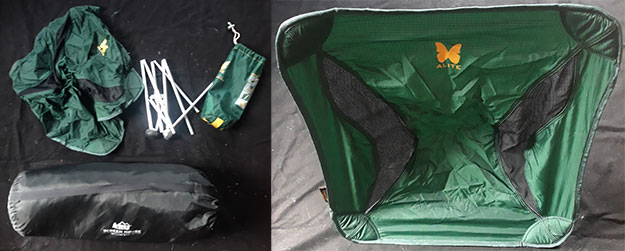
These final items are not things I generally carry on me, but I have used and likely will consider using from time to time this coming year. First off, I am contemplating suggesting each family get a collapsable chair like the one shown. They are cheap, fold up to fit in even the smallest backpack, and might be nice to have when sitting and playing games. I also have a mesh sided pop-up tent we could bring along (shown in the photo folded up as my one bedroom apartment where I took these photos was too small to pop it up!)
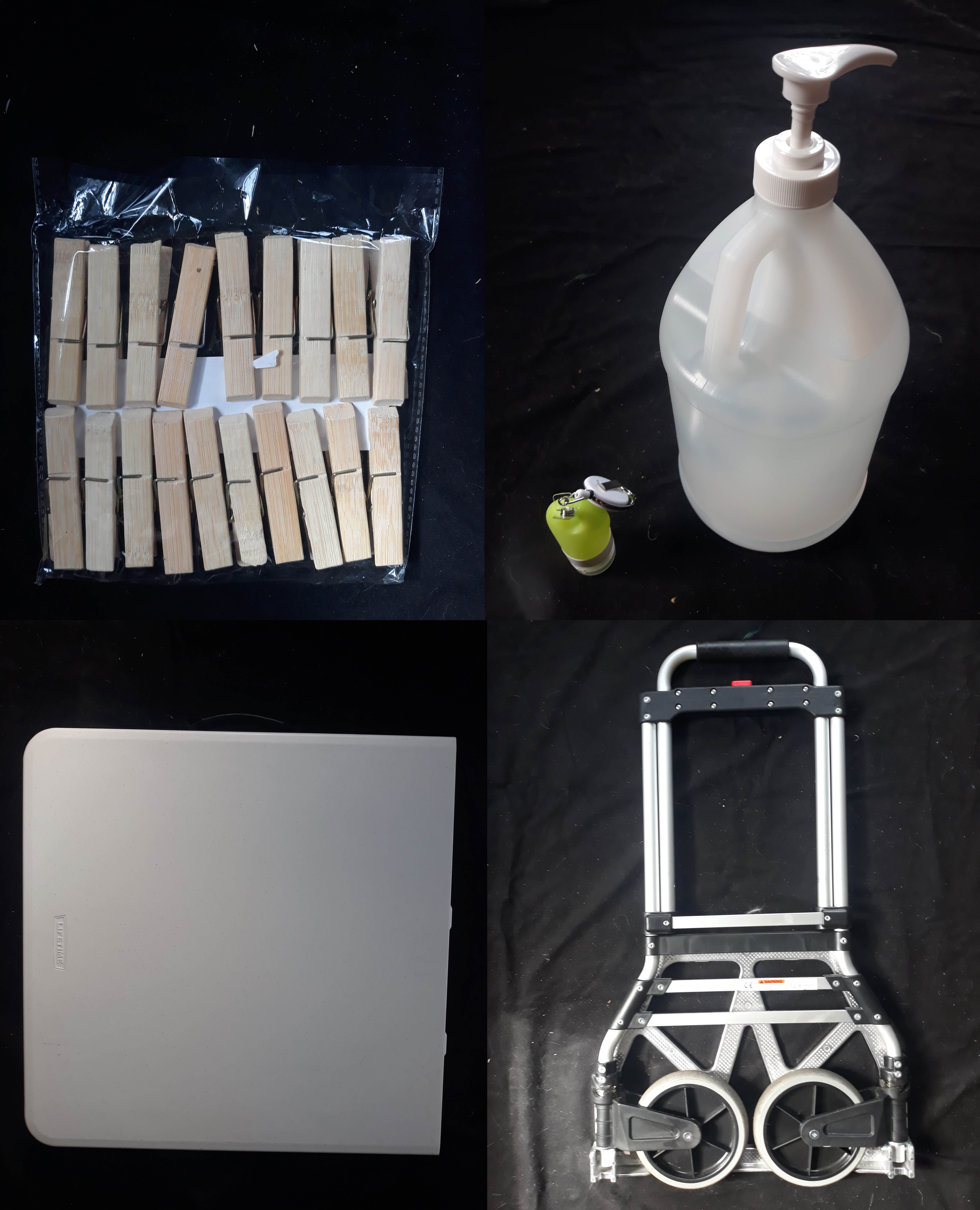
Clothespins may be helpful for drying artwork on a line or drying clothes after it rains. Oh, I decided to buy hand sanitizer by the gallon with a pump top. And then I bought reusable squeeze bottles that I can dispense it in. Not only was this literally half the cost of buying individual bottles, it is also a lot more environmentally conscious. And lastly, I have a folding table and a folding hand truck that I could bring along if we opted for a day of less mobility and more table top activities. In the past we have also set up stands and sold food and drinks (to raise money for Extinction Rebellion). I am not sure we’ll be doing such activities in the near future, but maybe down the road.
None of this is really rocket science, but hopefully it gave some inspiration. It is possible to be outside in all weather all year in cities like New York City. Having some of the right gear to make it enjoyable certainly helps pass the time. I would love to hear what you pack in your bag; please let me know by emailing me at alexander@self-directed.org. Thanks and enjoy!
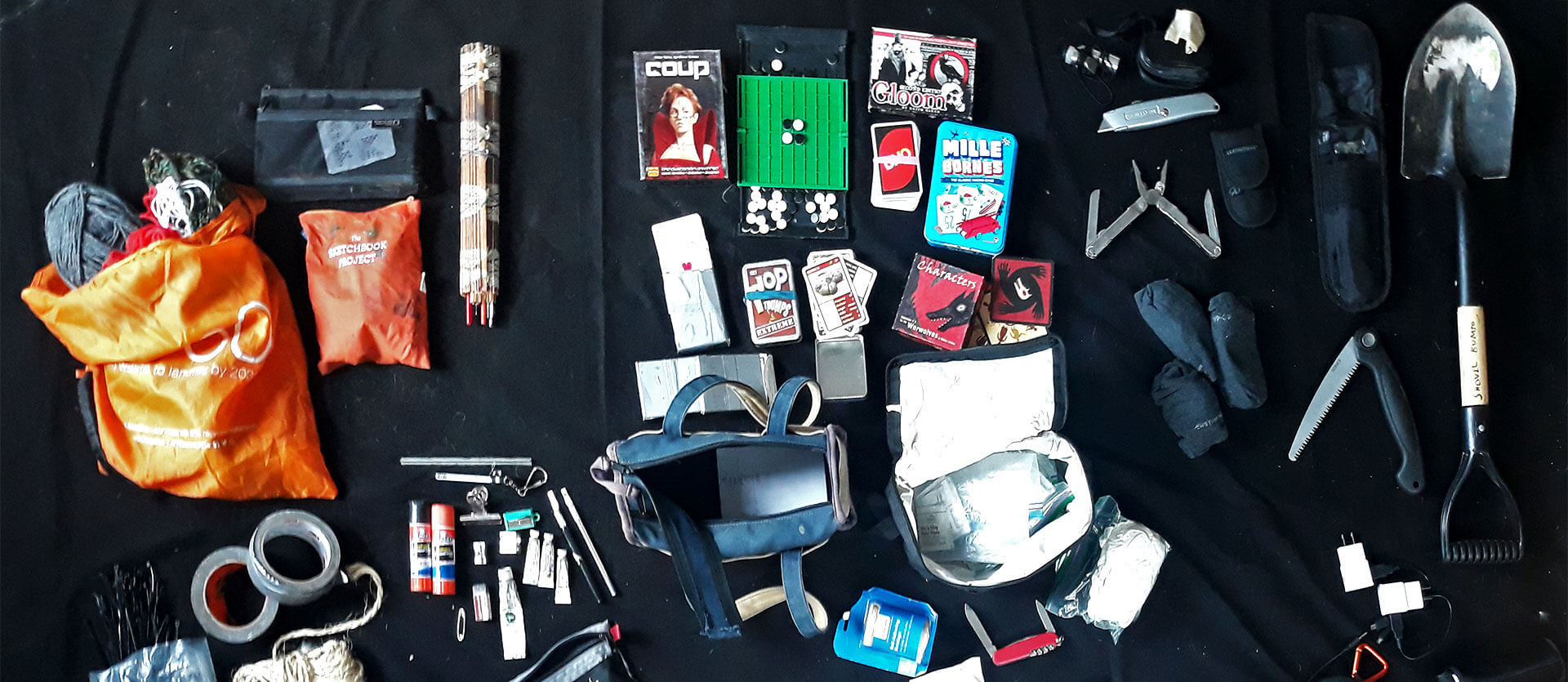
If you enjoyed this article and feel called to give back to ASDE, here are ways you can support our work:
- Donate money
- Share our content with others! Click one of the buttons above to easily share on Twitter, Facebook, or email.
- Consider becoming a Contributor for Tipping Points
Tipping Points Magazine amplifies the diverse voices within the Self-Directed Education movement. The views expressed in our content belong solely to the author(s). The Alliance for Self-Directed Education disclaims responsibility for any interpretation or application of the information provided. Engage in dialogue by reaching out to the author(s) directly.


